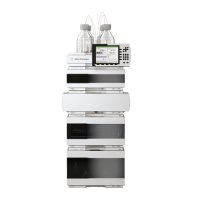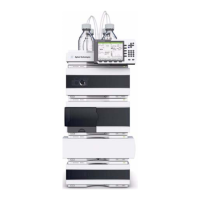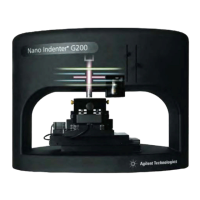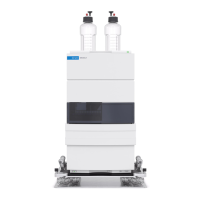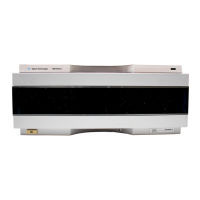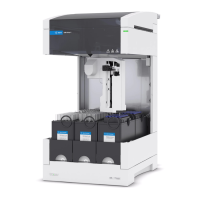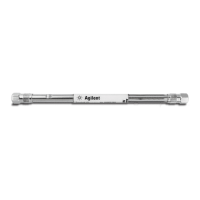Installing the GC 1
Agilent Intuvo 9000 GC Installation 51
Vent hazardous gases to a fume hood.
Hazardous sample gases or uncombusted hydrogen gas can exit
the GC from ECD exhaust, split vent and septum purge
exhausts, and the TCD exhaust. Such gases must be safely
vented in accordance with local safety procedures and
standards.
If using an ECD, or if using hydrogen carrier gas that will be
uncombusted, you must either safely vent the exhaust or
operate the GC inside a fume hood. For example, if using
hydrogen carrier gas, the GC would vent uncombusted hydrogen
from a thermal conductivity detector (TCD) and from the inlet
split vent and septum purge vent.
The ECD exhaust vents through a coiled tube. Connect tubing
from the tube fitting at the end of this tubing to an exhaust hood
via a hole in the back panel.
For a TCD, you must supply vent tubing and fittings to connect
to the detector exhaust tube on the top of the detector. Route
the tubing out the back of the GC, following the same path as for
the ECD vent tubing.
The other detectors (FID and FPD) combust any hydrogen
carrier gas.
Install FID vent chimney
If FID combustion will create corrosive gases, such as the HCl
produced during the combustion of methylene chloride solvent,
install the FID vent chimney. Connect the exhaust to a fume
hood as needed.
Detector exhaust vents here
Combustion of methylene chloride in the FID creates corrosive
gases that can damage the GC. If FID combustion will create
corrosive gases, install the FID vent chimney.
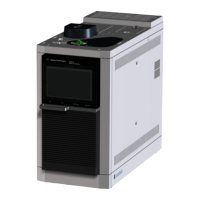
